Cats! Lewis Carroll had the grinning and vanishing Cheshire Cat; Beatrix Potter had Tom Kitten, and Ginger and Pickles. Mother Goose’s cat played the fiddle; the Kilkenny Cats obliterated each other. Puss in Boots and Dick Whittington’s cat made their owners’ fortunes. T.S. Eliot’s cats made it to Broadway. Ursula LeGuin’s cats had wings. Holly Golightly, in Truman Capote’s Breakfast at Tiffany’s, wouldn’t give her cat a name.
And there’s much much more…
Also see All About Dogs.
Table of Contents
CAT STORIES
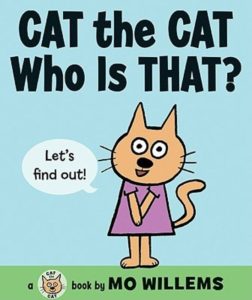
|
Mo Willem’s Cat the Cat, Who Is That? (Balzer + Bray, 2010) is a charmingly illustrated series of interlocking hellos, as Cat the Cat meets Mouse the Mouse (“Hello there”), Duck the Duck (“A pleasure, as always”), Fish the Fish (“Hey, dude”), and eventually a stranger, who turns out to be a new friend. For ages 2-5. |
| How do you say hello? Check out How to Say Hello in 20 Different Languages. | |
| Omniglot teaches the useful word “hello” in over 150 different languages, with audio clips. | |
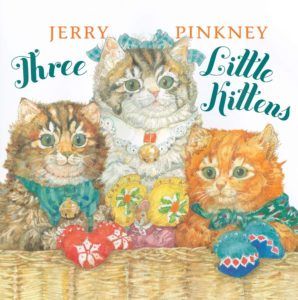
|
Jerry Pinkney’s Three Little Kittens (Dial Books, 2010) is a retelling of the traditional nursery rhyme about the trio of mitten-losing cats, with wonderful detailed illustrations. For ages 2-5. |
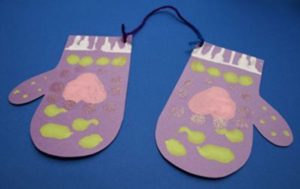
|
Mittens Craft has instructions for making (symmetrical) paper mittens, a project suitable for ages 3 and up. You’ll need construction paper, paint, and pieces of yarn. |
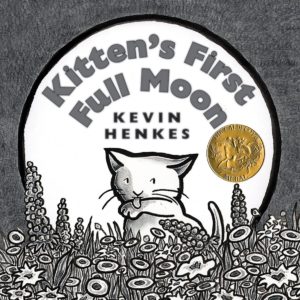
|
In Kevin Henkes’s, Kitten’s First Full Moon (Greenwillow Books, 2004), Kitten is convinced that the moon is a bowl of milk in the sky and is determined to get it. She fails time and again (“Poor Kitten!”) and finally tumbles into a pond chasing the moon’s reflection. Wet, tired, and hungry, Kitten returns home – to find a comforting bowl of milk waiting for her on the porch. For ages 2-5. |
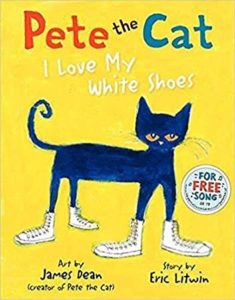
|
James Dean’s navy-blue Pete of Pete the Cat: I Love My White Shoes (HarperCollins, 2010) strolls down the street, singing a (downloadable) song (“I love my white shoes/I love my white shoes”). Then he squashes through a mountain of strawberries (shoes turn red), blueberries (shoes turn blue), mud (brown), and finally a helpful puddle (white again, but wet). There are several more song-supplemented books starring the tuneful Pete. For ages 2-6. |
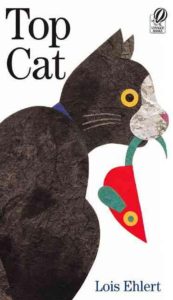
|
In Lois Ehlert’s Top Cat (Sandpiper, 2001), Top Cat is thoroughly upset when a box arrives with a new striped kitten inside. And he certainly doesn’t want to share his stuff, especially not his bright-red toy mouse – but by the end of the book he’s discovered that it’s fun to have a friend. For ages 3-6. See Top Cat Mask Craft for instructions for making a great mask based on Ehlert’s book. |
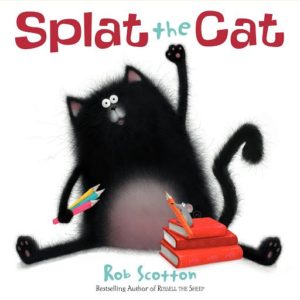
|
By Rob Scotton, author/illustrator of the wonderful Russell the Sheep, Splat the Cat (HarperCollins, 2008) features a fuzzily adorable black kitten who sets off for his first day at Cat School with (disastrously) his pet mouse Seymour concealed in his lunchbox. Many sequels. For ages 3-6. |
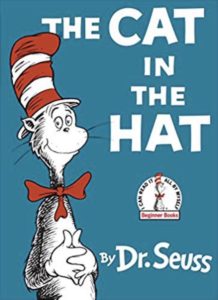
|
In Dr. Seuss’s rhyming The Cat in the Hat (Random House Books for Young Readers, 1957), it’s a wet dull day for Dick and Sally until an enormous cat in a red-and-white-striped hat shows up and creates mayhem. For ages 3 and up. |
| Making Learning Fun has a wealth of activities to accompany The Cat in the Hat, including art, math, and reading projects. Included are printable templates, game cards, manipulatives, and cupcake toppers. | |
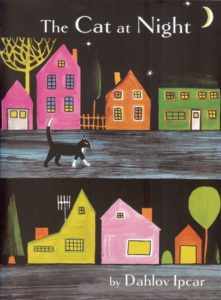
|
Dahlov Ipcar’s The Cat at Night (Islandport Press, 2009) is a simple story of a farm cat taking a night-time stroll through the surrounding countryside. The stylized artwork is wonderful, contrasting what people see at night (black silhouettes against a deep-blue sky) with what cats see (the same scene in a riot of pink, aqua, yellow, and green). For ages 3-6. |
| So what do cats REALLY see? Actually they’re colorblind. Check out Views Through the Eyes of 7 Animals. | |
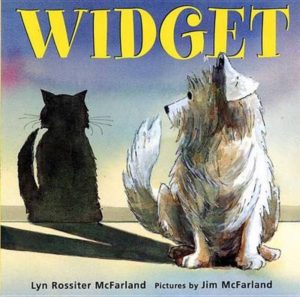
|
In Lyn Rossiter McFarlan’s Widget (Square Fish, 2006), a small shaggy stray dog wanders into a household of hostile cats and does the only thing he can think of that will allow him to stay: he pretends to be a cat. He meows, purrs, pounces, and hisses, until Mrs. Diggs, his kindly owner, falls down, and Widget saves the day by barking for help. For ages 3-6. |
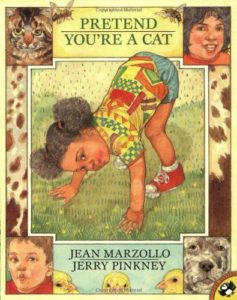
|
Pair Widget with Jean Marzallo’s Pretend You’re a Cat (Puffin, 1997), a collection of 13 little rhymes that encourage kids to take on the roles of different animals. (“Can you hiss?/Can you scat?/Can you purr/Like a cat?”) For ages 3-6. |
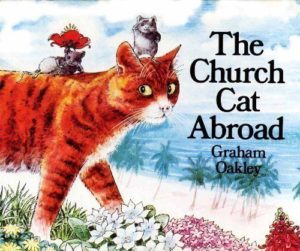
|
Graham Oakley’s wonderful British picture-book Church Mouse series – starting with The Church Mouse (Kane/Miller Book Publishers, 2010) – also features Sampson, the long-suffering orange church cat. (As befits a church cat, Sampson has given up eating mice.) There are many titles, all well worth tracking down. (Especially popular here: The Church Mice and the Moon, in which mice Humphrey and Arthur are kidnapped by the incompetent scientists of the Wortlethorp Space Program.) Recommended for ages 4 and up, but all ages will all laugh themselves silly. |
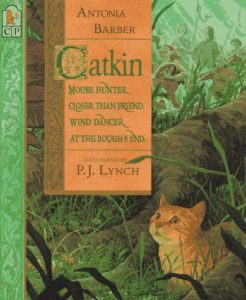
|
In Antonia Barber’s magical Catkin (Candlewick, 1996), illustrated with exquisite watercolor paintings, young Carrie has been stolen from her parents by the Little People, and her tiny cat, Catkin, is determined to get her back. To do so, he must answer three riddles, the answer to one of which will trap him under the hill forever – but the Wise Woman proposes a compromise, in which Carrie and Catkin will spend winters with the Little People and then return home each spring. A lovely story for ages 4 and up. |
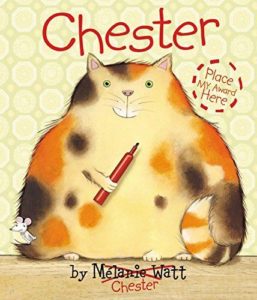
|
Melanie Watt’s Chester (Kids Can Press, 2009) is a gem. In fact, Chester, a large spotted cat – shown on the cover, clutching a red magic marker – is co-author of the book, busily correcting Melanie’s text to suit himself. Tandem writing at its finest for ages 4-8. |
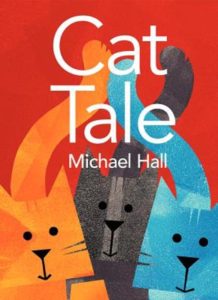
|
Michael Hall’s Cat Tale (Greenwillow, 2012) is a zany rhyming wordplay adventure starring three blocky bright-colored cats (Lillian, Tilly, and William J.) “They pack some books and kitty chews. They choose a spot. They spot some ewes.” Or try this: “They flee a steer. They steer a plane. They plane a board. They board a train.” Homonyms and homographs galore for ages 4 and up. |
